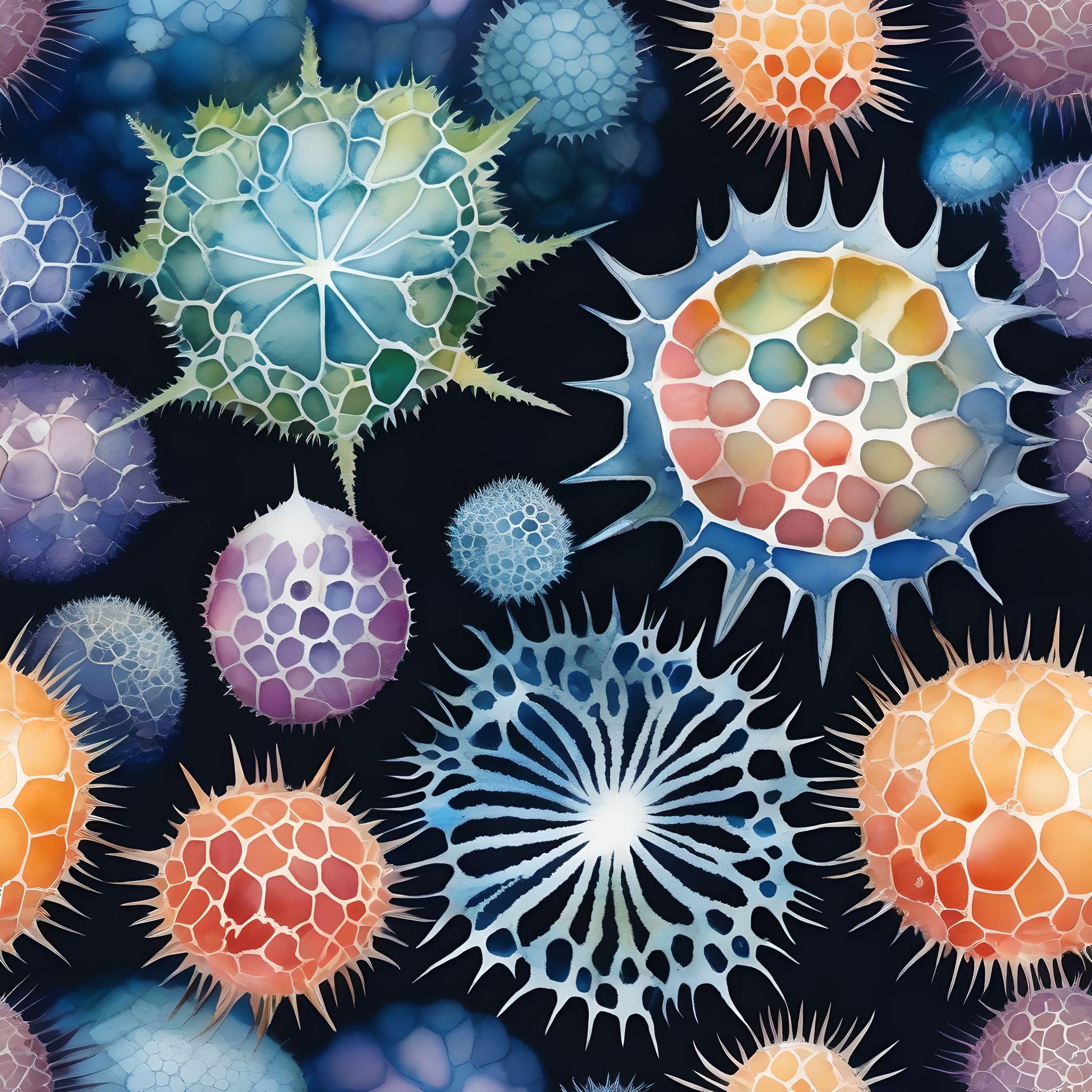AIPrompt – In the Style of Watercolor Painting create an image of Radiolarian Radiolarians are single-celled marine organisms with intricate silica skeletons. They come in diverse shapes- including spheres- spikes- and intricate lattice structures- and are known for their beautiful and symmetrical designs and bold colors — using Polychromatic Color

Radiolarians are intricate marine microorganisms that belong to the phylum Radiolaria. These fascinating creatures are characterized by their intricate mineral skeletons, which are often elaborately structured and intricately detailed. Radiolarians are typically found in oceanic waters, where they drift and float near the surface or in deeper layers, feeding on microscopic organisms and organic particles.

One of the most striking features of radiolarians is their diverse and beautiful skeletal structures, which come in a wide variety of shapes and designs. These intricate skeletons, composed of silica or strontium sulfate, are known as tests and serve to protect the organism’s soft body. The tests of radiolarians exhibit remarkable symmetry and complexity, often resembling delicate latticework, ornate cages, or intricate spines.

Radiolarians play a crucial role in marine ecosystems as primary consumers, feeding on plankton and other small organisms. Despite their small size, radiolarians are incredibly abundant and widespread, with thousands of different species found throughout the world’s oceans. Their intricate skeletal structures also contribute to the formation of marine sediments, as their tests accumulate on the ocean floor over time, eventually becoming part of the geological record.

In addition to their ecological significance, radiolarians have captured the imagination of scientists and artists alike for centuries. Their exquisite skeletal structures have inspired intricate scientific illustrations and artistic representations, showcasing the beauty and complexity of the natural world. Through the study of radiolarians, scientists gain valuable insights into marine biodiversity, paleoclimate reconstruction, and evolutionary history, further highlighting the importance of these enigmatic microorganisms in the global ecosystem.

